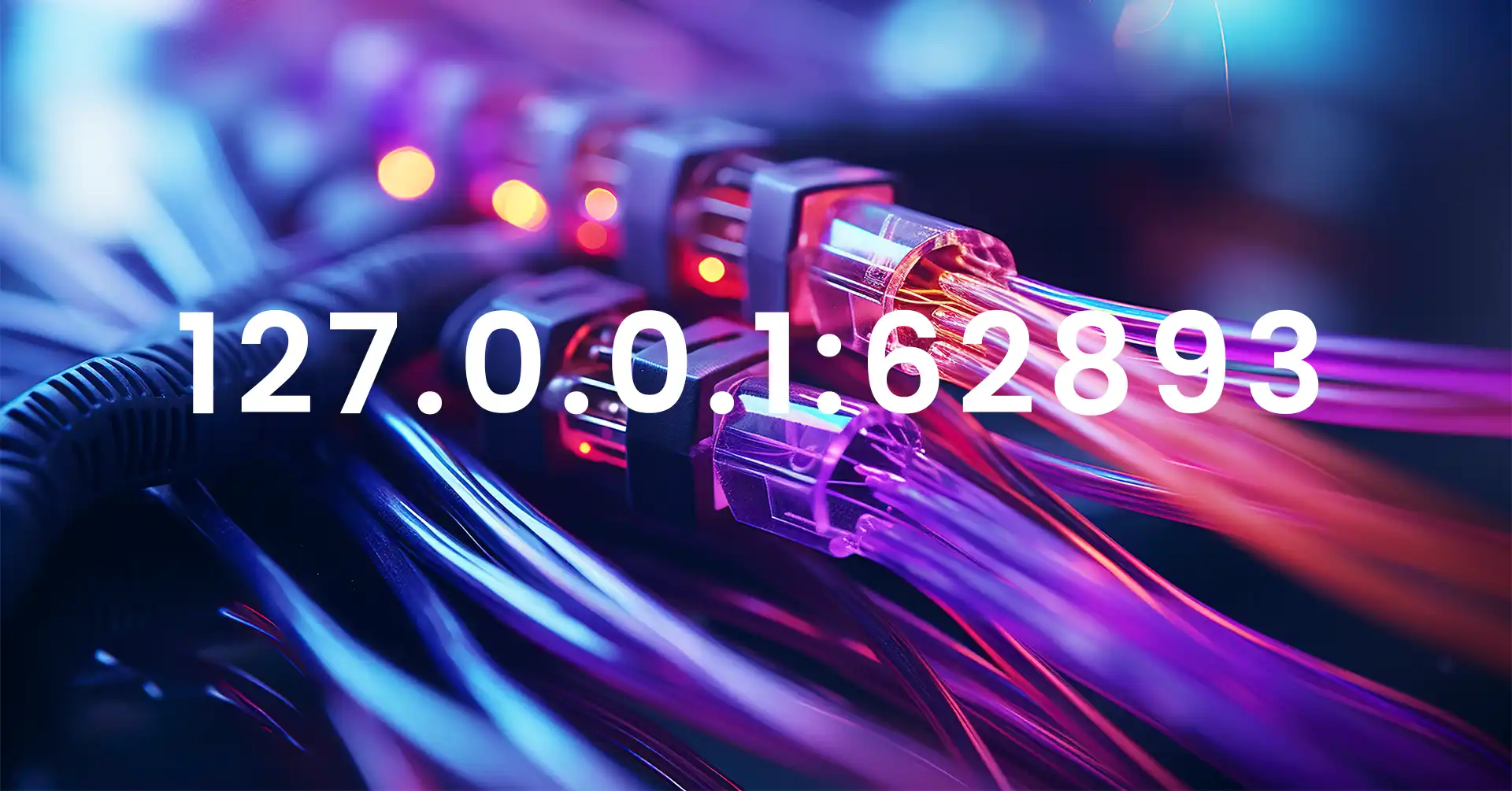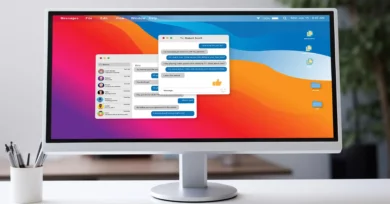Although 127.0.0.1:62893 does resemble some convoluted mesh of numbers and alphabets, it really is not too complicated. This section will describe and make you understand the two major parts involved in 127.0.0.1:62893.
Breaking the Code: The Two Main Components
When you see 127.0.0.1:62893, you’re looking at an IP address and a port number working together. These components help your computer communicate internally and with other devices. This will clarify what each of its parts actually means:
What is 127.0.0.1?
127.0.0.1 is also known as “localhost”. Think of it like this. If your computer’s address was a house, the internet would be a neighborhood. So 127.0.0.1 would be the equivalent of having a secret door in your own house that other people couldn’t use. It’s a means for programs on your computer to communicate with each other without sending data out to the Internet. So when you see 127.0.0.1:62893, the “127.0.0.1” part tells the computer to stay local.
Why use localhost?
Using 127.0.0.1 ensures that data doesn’t leave your computer, which is faster and safer. It’s especially useful in the case of developers trying out new software. When they test a new application, they might see 127.0.0.1:62893 pop up as it connects internally.
62893: The Role of Port Numbers
What is a Port Number?
Think of port numbers like having multiple doors in your house, but each door opens into a different room. When a program has to send data to another program, it tries to find the correct door to get out based on the port number. Number 62893 is just another such door that programs use to communicate with other similar programs on your computer.
How does 62893 work?
This is one of the less common port numbers that are still in use. It is such that it is able to serve a unique purpose, such as using it with an application like Memcached, which is used to help store information for some time. In 127.0.0.1:62893, the port number “62893” specifies your computer to relate to a certain program or service locally.
What is 127.0.0.1:62893?
You will observe the version 127.0.0.1:62893 for different reasons. For instance, during application development, most developers normally test the applications on 127.0.0.1:62893 until they are actually able to go online. They are capable of ironing out any kinks within a controlled environment.
Another reason you might come across 127.0.0.1:62893 is during the setup of some software configurations. Some applications demand internal communication through specific port numbers, and sometimes 127.0.0.1:62893 is used for that reason.
Finally, you will also see 127.0.0.1:62893 in case you’re troubleshooting networking problems or looking over your system performance and come around logs or diagnostic messages.
Error Messages: When Things Go Wrong
Getting an error with this value present 127.0.0.1:62893 doesn’t make sense at the moment. Still, mostly, perhaps, it will give you a clue as to what needs your attention. For example, when a service that the program is trying to reach doesn’t run, or maybe the port is blocked.
In few cases firewalls or security software randomly block the communication on 127.0.0.1:62893. If it does, you get error messages including ones about failing to establish any connection. You, in that case need to change firewall settings to allow the use of the right service.
Development Use: Testing and Configuring Software
Developers typically configure a servicable 127.0.0.1:62893 so traffic can be routed to 127.0.0.1:62893, emulating how it would work in the wild without disturbing systems live in production. It does catch methods early in the cycle.
Also, it becomes a norm to set up the software using 127.0.0.1:62893 in the first instance when designing your development environments. For instance, when you are hosting a web application with a database on one machine, it would be easier to have communication between the two services in case you are using 127.0.0.1:62893. It helps in attaining the concept of moving data very fast within the system in a secure manner.
Knowing what 127.0.0.1:62893 is and where it fits in the scheme of things can make a big difference in your ability to troubleshoot problems or improve performance, whether you’re developing new applications or trying to maintain legacy ones.
Safety Considerations: The Risks
127.0.0.1:62893 is generally rather benign, in that it opens up a means of internal communication between parts of your system. In a few instances, however, it is instead a way to be something harmful. The user risks a Malware application using 127.0.0.1:62893 to evade the system’s protective designs. Look for trouble and update your anti-virus program to detect hidden dangers.
When to Be Cautious: Identifying Potential Problems
You would better be careful if you observe any other programs and error messages that refer to 127.0.0.1:62893. For instance, you feel that this is happening: 127.0.0.1:62893 — in pop-ups or logs. Meaning is, a program which you have not identified may not be handling this address to effect some forms of unauthorized attacks on your machine. On regular checks in these happenings would help you detect an early potential problem.
Assuring Security: Protective Measures
This will assist you in safeguarding your computer against:
- Checking for program legitimacy that uses 127.0.0.1:62893. Usually, legitimate programs are adequately documented.
- You should scan for viruses on a regular basis as they are capable of assisting you to eliminate malware that may be misusing the component 127.0.0.1:62893.
- You should update all your software in the prevention of vulnerabilities; malware would, in any case, be due to the employment of 127.0.0.1.
- Check Firewall Setting: To inspect and control connections 127.0.0.1:62893, allow the connections, which may help to fight back any miscellaneous access attempts.
Common Problems and Solutions for 127.0.0.1:62893
It might seem complex to understand what is going on with 127.0.0.1:62893 and how to fix it, yet it’s pretty simple. Let us now discuss some common issues and fixes.
Troubleshooting Steps: Simple Solutions
When you face issues with 127.0.0.1:62893, follow these simple steps:
- Restart the Program: Many times all a buggy connection needs is a quick restart, with 127.0.0.1:62893.
- Check Connections: Make sure all the cables and network accessories are plugged in tight.
- Reboot Your Computer: Sometimes, a good system reboot is just what’s needed to clear out the cobwebs.
Most minor 127.0.0.1:62893 problems are fixed with these steps.
Firewall Settings: Settings That May Be Problematic
There are some firewall settings that interfere with 127.0.0.1:62893. Use the process outlined below to have a look and adjust the settings:
- Access Firewall Settings To do this, you open up firewall settings on your computer through the control panel.
- Add Exceptions One of the exceptions you should make is that 127.0.0.1:62893 will have an exception within the firewall for any program that is using it.
- Test Connection Now check if the 127.0.0.1:62893 issue holder has been resolved.
You have to make sure that your firewall does not block 127.0.0.1:62893.
Software Configuration Ensuring Right Configuration
The steps below will ensure that settings are checked and added if any software configuration is wrong.
- Review Options: Use 127.0.0.1:62893 to open the software settings.
- Validate Localhost and Port Number: Verify that localhost and port number are set to 127.0.0.1:62893.
- Save and Restart: Restart the software after saving your settings.
Old Software: System Update
With an old software, there would occur conflicts, which are clearly not desirable for 127.0.0.1:62893. Find information below:
- Check for Updates: Search for updates of all those software which may use 127.0.0.1:62893.
- Install Updates: As soon as updates are available, download and install them. This will keep the software updated and compatible.
- Restart Your Computer: Once updates are installed, restart your computer to implement changes.
Conclusion
By now, you would have firmly grasped 127.0.0.1:62893, what it is, why it appears and how common issues associated with it are troubleshot. Remember that 127.0.0.1:62893 makes up a core subsidiary part of the internal communication within your computer and belongs to developers and their software, using it as a testing and configuration port. Applying just these simple solutions—tweaking firewall settings, ensuring the right software configuration, and updating your system—you will easily manage the issues that arise with 127.0.0.1:62893 and ensure smooth, safe operations on your device.
Also Read:






